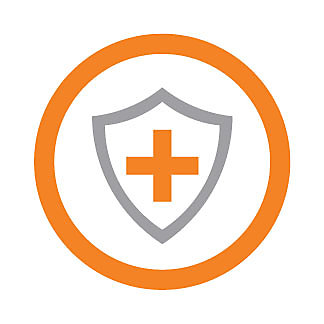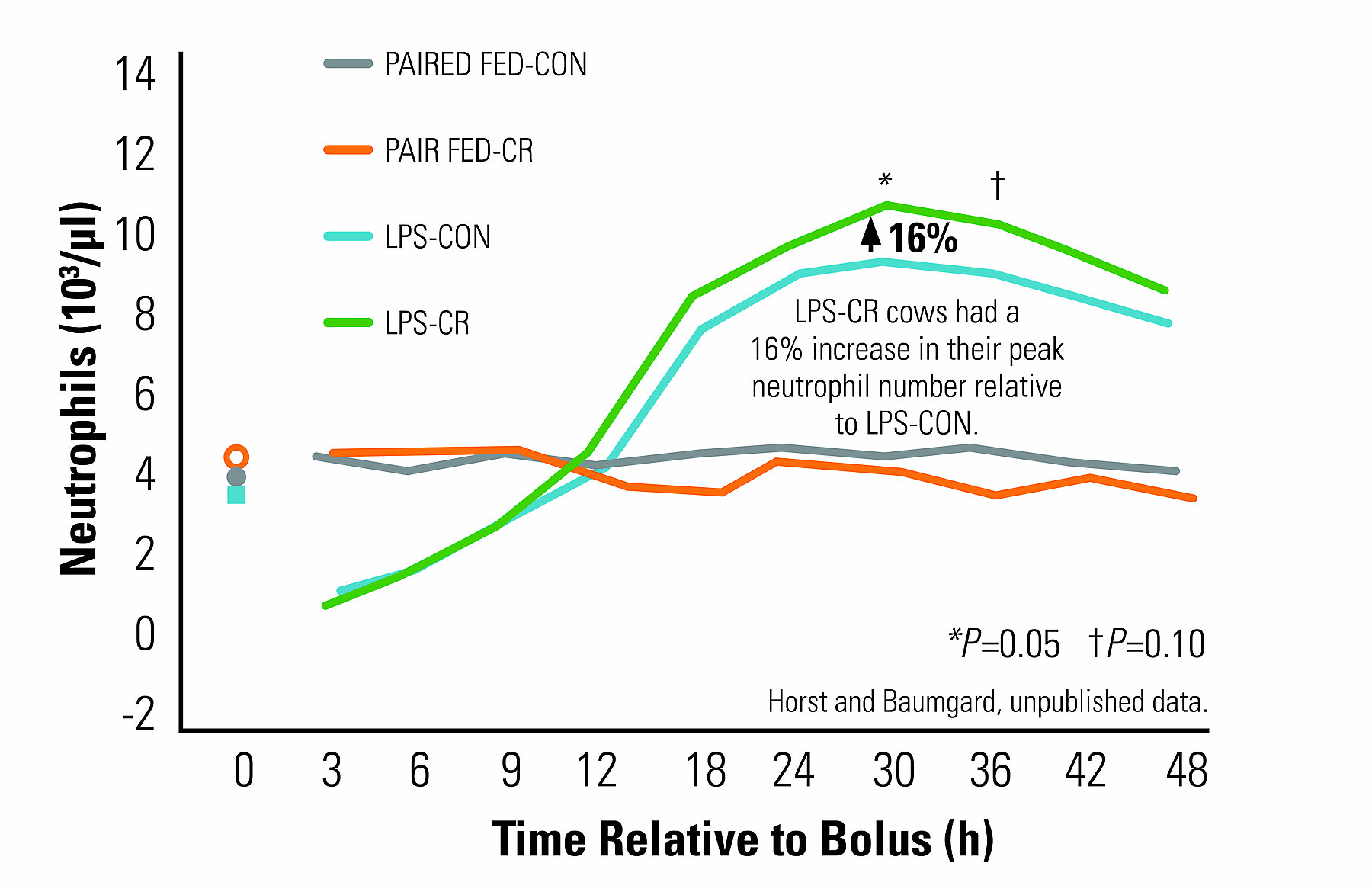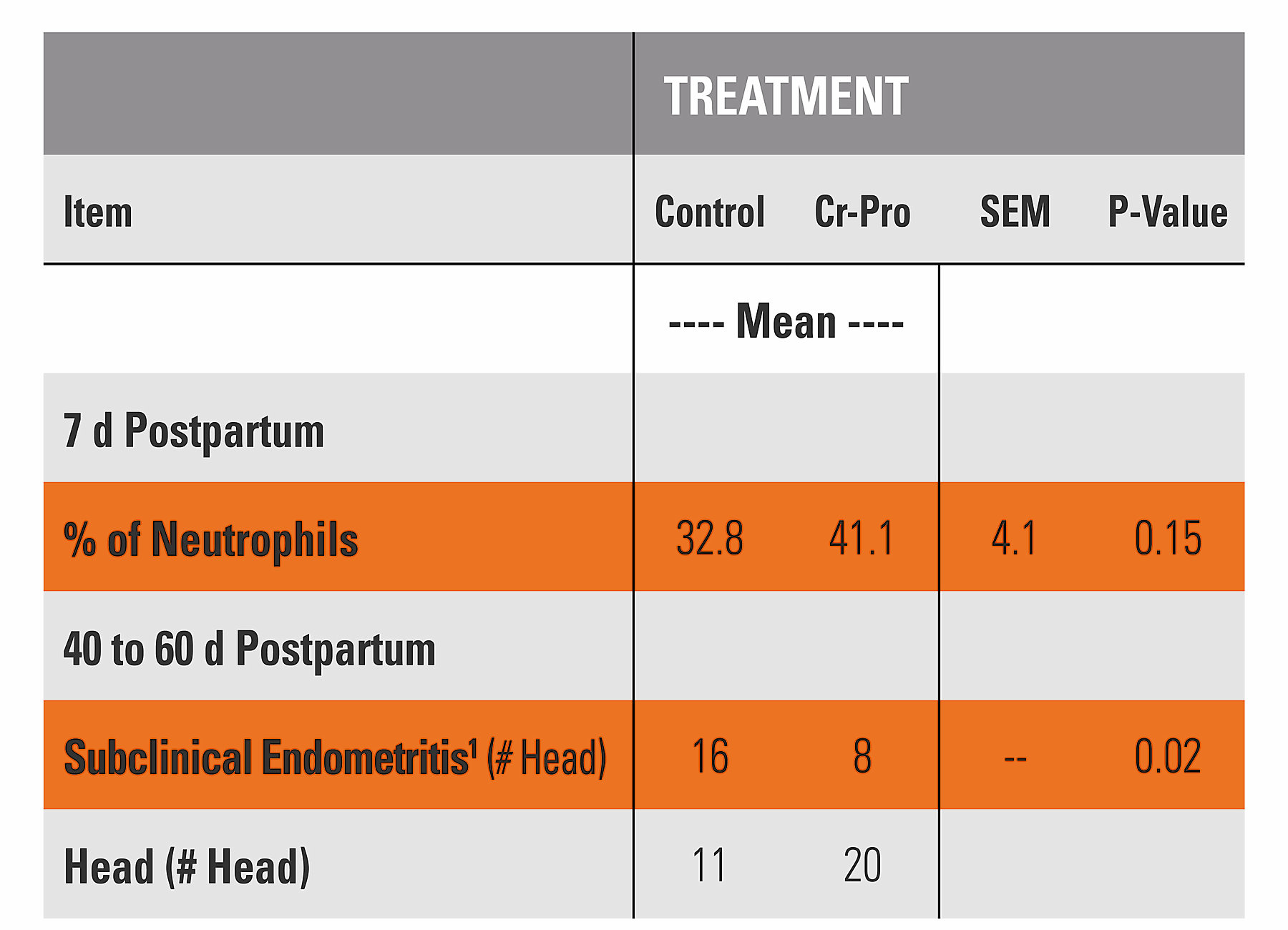You are viewing Canada
- United States
- Canada
- Mexico
- South America
- EMENA
- Sub-Saharan Africa
- Russia
- South Asia
- Asia Pacific
- China
- Global
Choose Your Location:
- United States
- Canada
- Mexico
Popular Searches
- Animal Nutrition & Health
- KemTRACE® Chromium
- KemTRACE® Chromium for Dairy Cattle
- KemTRACE® Chromium and Immunity in Dairy Cattle
KemTRACE® Chromium and Immunity

Animals Experiencing Frequent Immune Challenges May Have:
- Decreased growth
- Inefficient feed utilization
- Poor reproduction
- Increased health costs
%20-%20Canada?$responsive$)
How Often Does an Immunity Challenge Occur?
Dairy cows are constantly at risk of being challenged by Escherichia coli mastitis, Salmonella infections, mycotoxin insults and more. The impact of even a minor immune challenge could be significant, especially if lipopolysaccharides (LPS) are reduced. In fact, 1/10 less of the LPS could result in 2.78 kg of milk loss per day.1 At $70 per hectoliter, that's $1.95 lost per cow per day.
In order to combat an immune challenge, an active immune system requires 4 lbs. of sugar over a 24-hour period. The sugar meant for milk production will instead be used to support this immune function, reducing total milk production and profitability.
What is 1 kg of Glucose Worth in Terms of Milk Yield Performance?

Impact of Chromium on Immunity
Research studies have reported improved immune function of activated leukocytes when animals were supplemented with chromium.2,3,4
A recent study conducted with lactating Holstein cows observed the following:
INCREASED CIRCULATING NEUTROPHIL COUNTS IN LIPOPOLYSACCHARIDE (LPS) - administered cows supplemented with chromium (Figure 1).5

Figure 1. Effect of chromium supplementation on circulating neutrophils following an LPS challenge or pair-feeding in lactating dairy cows5
Fending Off Infection
Research at Cornell University suggests that:
SUPPLEMENTAL CHROMIUM ENHANCED IMMUNE RESPONSES in early lactation to bacterial challenges in the uterus by increasing neutrophil proliferation (Table 1).6
Table 1. Effect of chromium supplementation on endometrial cytology6

1Neutrophil > 10%
Increased neutrophil proliferation more effectively cleared infections, which resulted in fewer cows with subclinical endometritis – a leading cause of reduced first service insemination conception rates. Ultimately, improving overall herd reproductive health should contribute to lower veterinary/medical costs, lower improved conception rates, and more optimal milk production.
Resources
References
1Kvidera, S. K. 2017. Glucose requirements of an activated immune system in lactating Holstein cows. J. Dairy Sci. 100:3, 2360-2374.
2Moonsie-Shageer, S., and D. N. Mowat. 1993. Effect of level of supplemental chromium on performance, serum constituents, and immune status of stressed feeder calves. J. Anim. Sci. 71:232-238.
3Chang, X., B. A. Mallard, and D. N. Mowat. 1996. Effects of chromium on health status, blood neutrophil phagocytosis and in vitro lymphocyte blastogenesis of dairy cows. Vet. Immunol. Immunopathol. 52:37-52.
4Lee, D. N., C. F. Weng, H. T. Yen, T. F. Shen, and B. J. Chen. 2000. Effects of chromium supplementation and lipopolysaccharide injection on physiological responses of weanling pigs. Asian-Australasian. J. Anim. Sci. 13:528.534.
5Horst, E. A., S. K. Kvidera, E. J. Mayorga, C. S. Shouse, M. Al-Qaisi, M. J. Dickson, J. Ydstie, H. A. Ramirez, A. F. Keating, D. J. Dickson, K. E. Griswold, and L. H. Baumgard. 2018. Effect of chromium on bioenergetics and leukocyte dynamics following immunoactivation in lactating Holstein cows. J. Dairy Sci. 101:1-16.
6Yasui, T., J. A. A. McArt, C. M. Tyan, R. O. Gilbert, D. V. Nydam, F. Valdez, K. E. Griswold, and T. R. Overton. 2014. Effects of chromium propionate supplementation during the periparturient period and early lactation on metabolism, performance, and cytological endometritis in dairy cows. J. Dairy Sci. 97:6400-6410.
Have a Question?
If you have a question about our products or services, or just want more information, fill out the form below and someone on our team will be in contact with you.
- California Supply Chain Act
- Canada Forced Labor and Child Labor Report
- Email Disclaimer
- GDPR Personal Data Addendum
- General Terms & Conditions for Vendors
- Global Environmental Policy Statement
- Indirect Cost Estimates
- Kemin Terms & Conditions
- Modern Slavery Act Transparency Statement
- Privacy Policy
- Sitemap
- Change Cookie Consent
- Animal Welfare Statement
© Kemin Industries, Inc. and its group of companies All rights reserved. ® ™ Trademarks of Kemin Industries, Inc., USA
Certain statements may not be applicable in all geographical regions. Product labeling and associated claims may differ based upon government requirements.


